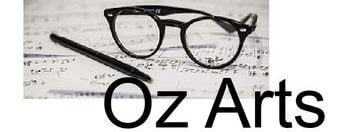A centenary tribute
by Neville Cohn
Many composers have been inspired by birds, whether through their song or flight. The latter is typified by Vaughan Williams’ sublimely beautiful The Lark Ascending. And the call of the cuckoo is instantly recognisable in Beethoven’s Pastoral Symphony. Think, too, of Schubert’s ecstatic song “Hark, hark the Lark” to words by Shakespeare. But it was Olivier Messiaen above all who found often white hot inspiration in bird song. He was an amateur ornithologist with a huge knowledge of bird life.
His excruciatingly difficult Catalogue d’Oiseaux (which Michael Kieran Harvey will play for PIAF in February) is testament to the finesse he brought to the job of painstakingly notating birdsong from many regions in France. He wrote it while his first wife, seriously ill, languished in hospital for 12 years before dying in 1959.
Messiaen said that during this time, birdsong was a refuge to which he turned again and again, “in my darkest hours, when my uselessness is brutally revealed to me”.
Happier times were to come when he and his second wife Yvonne Loriod (for whom Messiaen wrote some of his greatest works) became a familiar site around France – and to a much lesser extent in Japan, Israel, North and South America.
Loriod, Messiaen’s muse, with tape recorder at the ready, the composer with paper and pencil, erasers and note books as well as binoculars, worked indefatigably to capture on paper the subtlest nuances of each bird’s cry and call.
More often than not, Messiaen’s piano music is excruciatingly difficult. And while the composer was a fair pianist, he knew his technique was simply not up to the demands of his own compositions. Little Olivier taught himself to play on a broken down instrument belonging to an uncle. Then and throughout his life, he said, that he “knew, instinctively, that anything he might ever compose needed to be interesting (and) beautiful to listen to, to touch the listener”.
Instead of toys as gifts at Xmas, little Olivier preferred by far, presents of orchestral scores which he would read in bed with as much enthusiasm and focus as another child might read a Superman or Bugs Bunny comic. In this, he was similar to Benjamin Britten as a child.
On his 10th birthday, one of little Olivier’s teachers gave the child a score of Debussy’s opera Pelleas and Melisande which was, the composer recalled, “a revelation – probably the most decisive influence of my life – it had never been listened to with such attention.”
“I didn’t get a piano prize at the Conservatoire (Paris)”, he once said. “I knew I would never have the virtuosity and the absolutely amazing technical possibilities of Yvonne Loriod” who premiered many of his works for piano.
In their painstaking gathering of birdsong, Messiaen and his wife were walking in the footsteps of Bartok and Vaughan Williams who had both had spent considerable amounts of time trekking through remote areas to notate and record the folk melodies of rapidly disappearing rural communities.
For most birdwatchers, the thrill is seeing this bird or that and making a note of it. For Messiaen, though, that was only the beginning of capturing the essence of the bird’s song by notating it meticulously and then working it into whatever composition Messsiaen required it for.
The composer, in awe of birdsong, once said that “it is probable that in the artistic hierarchy, birds are the greatest musicians existing on our planet”.
Although it was the birdlife of his native France that received most of Messiaen’s attention, he was no less fastidious in notating the calls and cries of winged creatures across the world, as in, say, Malaysia and China. One of the earliest examples of Messiaen making use of bird calls in his own music is La Merle Noir (The Blackbird) for flute and piano. As he became more skilled in using birdsong in his music, he would, from time to time, use bird calls which he would weave together in fugal style – and these are marvels of contrapuntal intricacy.
But if the songs of birdlife were a prime pre-occupation, there were any number of other factors which triggered his imagination: stalactites, bell chimes, galaxies and photons – and landscapes in general and mountains in particular. The music he wrote as a result of a visit to southern Utah in the USA resulted in a feature of the area being rechristened Mount Messiaen. This may well be the only mountain anywhere in the world named after a composer. Messiaen’s imagination was often triggered, too, by paintings, one, for instance, showing the Virgin kneeling in contemplation, worshipping her unborn Child – or by a tapestry representing Christ on a horse, wielding a sword; these keyboard responses are found in Messiaen’s Twenty Contemplations of the Christ Child.
Creative juices almost invariably flowed at the sight of light shining through stained glass windows. This, the composer once enthused, “is one of the most wonderful creations of man. You are overwhelmed. For me, it is the beginning of Paradise”.
His fascination with stained glass was a natural result of his ability, noted when he was still a child, of associating different colours with different tonalities ie he would see colours when listening to sound. There was another youthful epiphany: “I noticed an extraordinary thing (when aged six year). I was reading, and I could HEAR what I was reading in my head”. These were pointers to a rare musical gift.
Since his childhood, Messiaen was profoundly religious; a devout Catholic his entire life. This was somewhat surprising in that he was brought up in a home that was conspicuously agnostic and irreligious.
Messiaen, incidentally, was organist at La Trinite, Paris for 60 years from the age of 22 years until his death at 83.
